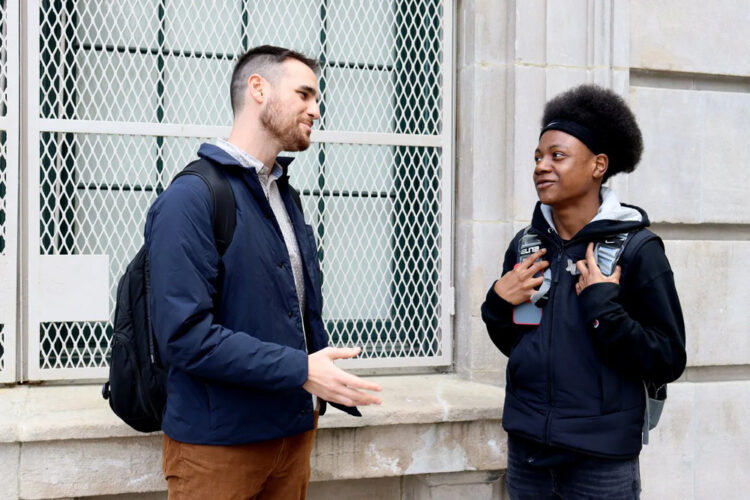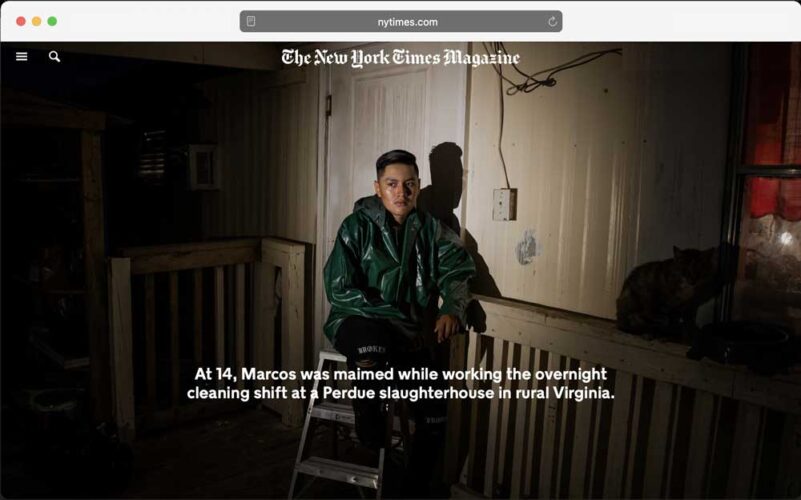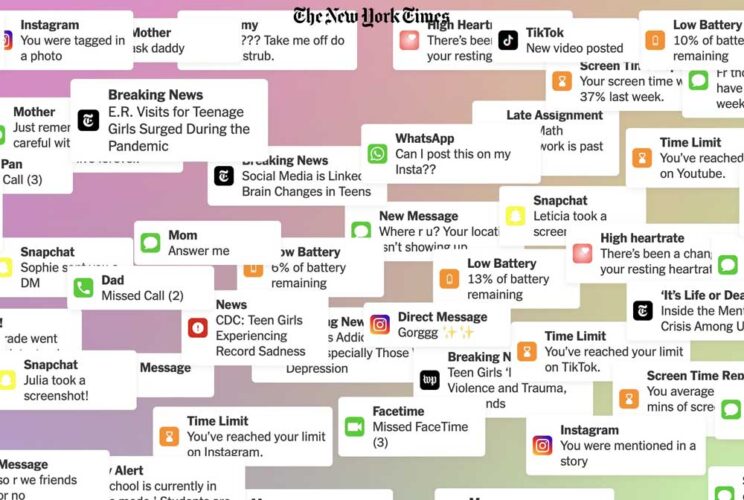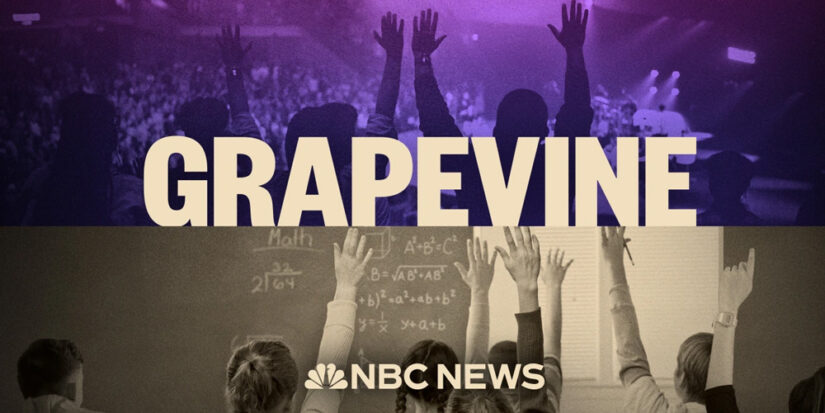Our 2023 Jealousy List: 17 Unforgettable Stories About Schools, Students & Teen Mental Health We Wish We Had Published This Year
The 74’s newsroom spotlights some of the most important education journalism of 2023.
By The 74 Staff | November 30, 2023As we do every November, it’s time to rip off pay homage to Bloomberg Businessweek’s “Jealousy List” — the magazine’s annual tribute to the most important journalism published by its competitors. (You can see their notable 2022 edition right here.)
Here at The 74, we’re also looking to celebrate the most memorable education coverage from the past year, and to champion the journalists who have helped us think a little differently about an array of issues — from COVID learning recovery to teen mental health, student trauma, school discipline and more.
Coast to coast, our reporters have pored back over their bookmarks, tweets and browser histories, and revived the links that moved them most. Below, in no particular order, are 17 important articles we wish we had published in 2023. We hope you’ll read the stories you might have missed and help share the standouts, so even more readers can benefit from their insights.
Chalkbeat New York
NYC’s Rising Graduation Rates Bucked National Trends. A Little-Known Grading Policy May Hold Clues
Nearly four years after the emergence of COVID-19, too much uncertainty remains about what students actually learned while their schools adapted to pandemic conditions. At Chalkbeat New York, former English teacher Amanda Geduld explored one of the controversial measures that school authorities took to support struggling high schoolers in New York City: the so-called NX (or “course-in-progress”) grade, which was assigned to tens of thousands of kids who didn’t complete their coursework during the tumultuous era of remote instruction.

The NX designation was originally intended to replace failing marks for a small subset of children dealing with life crises. But by the end of the 2021-22 school year, 1 out of every 3 New York high schoolers received one — and they may help account for the city’s unusually high graduation rates during those years. According to the dozens of educators interviewed by Geduld, the NX marks were typically cleared, either by teachers or administrators, regardless of whether students ever finished the necessary make-up work. The story gives reason to doubt whether the “incomplete learning” of the early 2020s will ever be completed. Read Geduld’s investigation here.

The New York Times
Who Runs the Best U.S. Schools? It May Be the Defense Department
Better test scores. A narrowed achievement gap. Solid wages for teachers. Higher standards for all students. It’s not the outcome of a plucky, one-off campus beating the odds, but of an entire school system, one spread all over the world, Sarah Mervosh explains. The Pentagon’s schools for children of military members and civilian employees, which serve some 66,000 students in the United States and abroad, have built a system seemingly impermeable to the outside forces that often keep children from success.

Pentagon schools boast low teacher turnover, the result perhaps, of far higher wages — plus a steady and reliable budget for supplies. They also have enacted meaningful curriculum improvements rolled out with consistency and over time, creating an enviable system, particularly for children who are often underserved: Defense Department schools yield far better outcomes for many Black, Hispanic and impoverished students as compared to their peers elsewhere. And while racial disparities remain, overall performance has continued to grow during the past decade, propelling students forward, even through the trauma of the pandemic. Read Mervosh’s article here.

ProPublica & InvestigateTV
As Rail Profits Soar, Blocked Crossings Force Kids to Crawl Under Trains to Get to School
I grew up by the railroad tracks. We loved watching the graffiti-covered cars, laying coins on the tracks to get smooshed and throwing snowballs at the Amtrak cars full of passengers as they whizzed by. But I also vividly remember those cold Minnesota mornings when my brother and I would have to climb over stalled train cars to reach our bus stop. As a child, I thought it was an adventure. Now, as a parent of two, I find the thought of my own children doing the same gives me shivers.
I felt that same shiver reading ProPublica and InvestigateTV’s investigation into blocked train crossings in Hammond, Indiana. The terrifying images of children who have to risk their lives climbing over or under trains to get to school reveal that stalled trains are not just a mere inconvenience, but a slow-motion accident waiting to happen — especially in the impoverished communities these trains bisect. The rail companies appear reluctant to act on their own, but, hopefully, the unforgettable scenes captured here will propel the government to force changes before it’s too late. See the full investigation.

Rolling Stone
How a High School Mariachi Team Triumphed in Uvalde
I’m a sucker for two things: heartbreaking accounts of the arts uplifting kids … and teachers with long commutes. This piece by Julyssa Lopez has both. Lopez, a senior music editor, takes her time telling the story of Uvalde High School’s varsity mariachi group and the dedicated teacher who drives his silver Nissan Sentra 140 miles round trip each day to lead the group. It goes without saying that you’re going to cry while reading the account of this scrappy group as it comes together, finds its voice and prepares for the state mariachi championships.

What’s surprising is how central to the community’s healing this group becomes. Its leader is a surprise too: Born in Puerto Rico but raised in El Paso, Albert Martinez originally thought he’d have a career as a jazz or merengue trumpeter, but plans changed. Then, after the shooting at Robb Elementary, they changed again. The result is a beautiful, restrained depiction of music bringing kids together, with exceptional portraits of the main players. Read Lopez’s feature.

The Hechinger Report
A School Closure Cliff is Coming. Black and Hispanic Students Are Likely to Bear the Brunt
It’s no secret that schools are gearing up for a financial storm — pandemic relief funds are sunsetting; the Department of Education estimates a 5% decline in enrollment through 2031. As more districts weigh closures, Rebecca Redelmeier’s dive into Louisiana’s largest district serves as a cautionary tale. Weaving trends that reach back 30 years and family histories, Redelmeier unveils a troubling reality: Black and brown students are most likely to be the ones grieving their shuttered schools, forced into new communities, their friends and teachers scattered across town. Even when performance is comparable to that of predominantly white schools, those serving predominantly students of color are the ones on the chopping block, their students pushed into lower-performing schools. Experts fear that, should the trend continue, academic gaps across racial lines would grow even more. In this suburban New Orleans district, two top-performing high schools were closed, including the first to offer a high school education to Black students, built after community members pooled money in the 1930s for land and construction. The story begs the question: if closures have to be on the table, how can districts ensure the impact is felt equitably? Read Redelmeier’s report.

The New York Times Magazine
The Kids on the Night Shift
The New York Times Magazine took readers deep inside the story of an immigrant teen’s drive to support his family by working in a dangerous industry — one that is illegally depending on minors as young as middle school age to stay in business. At a time when some states are rolling back child labor laws, Hannah Dreier’s deeply reported feature called it “a perfect match between the needs of the plants and the needs of the newcomers.”

In heartbreaking detail, the article describes the life of 14-year-old Marcos, who nearly lost an arm in an accident at a poultry plant. Meridith Kohut’s photos depicted scenes of Marcos’s rural Virginia world — characters like the USDA inspector who said it’s not her responsibility to report child labor violations and scenes such as the trailer park Marcos shares with his cousin. While not specifically an education story, it delves into the way working impacts immigrant students’ ability to learn, and raises questions about the responsibility of educators when companies break the law. Read Dreier’s report.

Houston Landing
Houston ISD Still Off-Track on Key Fixes to Special Education, Documents Reveal
From former 74 scribe Asher Lehrer-Small comes this badly needed follow-up to the Houston Chronicle’s Pulitzer Prize-winning expose that revealed an illegal cap on the number of students with disabilities that schools could serve. The original investigation found that tens of thousands of students with profound needs were arbitrarily left without support. This failure is one of the reasons used to justify a state takeover of the sprawling Houston Independent School District that took place earlier this year. Now at Houston Landing, Lehrer-Small used public records to report “Houston ISD still off-track on key fixes to special education,” revealing the district’s continued struggle to improve special education for thousands of children. Read Lehrer-Small’s report (and bonus reading: The 74 reported on slow-to-nonexistent progress statewide in 2019.)

The New York Times
‘Being 13’: What It’s Like to Be a 13-Year-Old Girl Today
There was no shortage this year of reporting on teen mental health and the impact of social media on developing brains. But apart from some brief conversations with friends’ younger siblings, I’ve heard little firsthand from teenagers themselves about what it’s like to live in a world that revolves around phones, apps and social platforms. “I wanted to put a face to the alarming headlines about teens and social media — in particular, girls,” Jessica Bennett writes in her year-in-the-making interactive Times feature, “Being 13.”

The thoroughness of the project — complete with real diary entries, texts, voice memos and photographs — brings into focus the harsh reality behind the mental health stats: One teen’s text says she feels more self-conscious than ever. Another reveals she has a “close connection” with her phone. Lined with reminders of the proverbial adolescent struggle, the article also spotlights the unique pressures being faced by teens in 2023, from social media to growing up during a pandemic and a collective sense of doom that overshadows daily life. The three brave voices of Anna, London and Addi draw readers into their complicated worlds while unique visuals bring the storyline to life, transforming a web page into something fun, unique and a tad overwhelming, as texts and emojis flood the screen. Read the story.

USA Today
Schools Spend Billions on Training so Every Student Can Succeed. They Don’t Know if it Works
Diversity, equity and inclusion. Add the word “training,” and you will have stepped on one of education politics’ third rails, along with how race in America is taught in classrooms and how LGBTQ+ students are treated in schools. While the arguments raged, Katherine Reynolds Lewis — with contributions from Rachel Ryan, Maureen Ojiambo and Andrew Hahndid — did a deep dive into the more than $20 billion a year public schools spend training teachers, the majority of whom are white, to teach more successfully across racial lines. They queried the country’s 100 largest school districts and got responses from 42. Their reveal: None measured the training’s effectiveness against metrics or by conducting objective research studies. That may be a disappointment, and one that could fuel ever-ready criticism of DEI efforts, but it doesn’t dim the passion of many educators to banish low expectations, end the school-to-prison pipeline and develop a more diverse teacher workforce. “The disease in education is the predictability of student achievement by race,” says UnboundED’s CEO Lacey Robinson. Read the story.

The City
NYC Schools Handcuff and Haul Away Kids in Emotional Crisis
New York City’s education leaders had pledged for years to stop calling the cops on students in the midst of mental health crises, but as The City’s Abigail Kramer exposed in May, they’ve failed to keep their word. Under a court settlement from nearly a decade ago, educators are supposed to call 911 only on students who pose an “imminent and substantial risk of serious injury” to themselves or others. Yet Kramer’s reporting revealed the practice remains commonplace, with police officers called thousands of times a year to intervene with children in mental distress. In response to behaviors that are often attributed to students’ disabilities, police routinely handcuff children — and Black students disproportionately — while they wait to be transported by ambulance to emergency rooms. The outcome, for many students, is further trauma. Read Kramer’s story here.

Inside Higher Ed
Paying Undergrad Mental Health Workers
In October, Inside Higher Ed’s Johanna Alonso took a closer look at colleges paying students to serve as mental health counselors — an increasingly difficult demand as schools nationwide struggle to meet students’ mental health needs. This includes having students lead educational workshops, on-campus programming and one-on-one coaching for their peers. California State University, Fullerton is one of many colleges offering these services — a responsibility that used to fall on traditional counseling centers. “It’s really important to us that any intervention we offer is accessible — it’s quick and it’s free. When it comes to wellness, there’s a negative belief that you have to have money in order to take care of yourself,” said Jessica Leone-Aldrich, a professional counselor and prevention education coordinator at Cal State Fullerton. Read Alonso’s article here.

The New York Times
How Educators Secretly Remove Students with Disabilities from School
Hundreds, or perhaps thousands, of times every school year, students with disabilities are taken out of their classrooms in what are known as off-the-book suspensions — informal actions that are not reported or tracked, but routinely violate students’ civil rights and are devastating to their academic and social well-being. In contrast to formal expulsions, these transfers allow schools to remove challenging students from class rather than provide special education supports and accommodations required under federal law. “The reality is that there are children in this country who are still considered of insufficient quality to go to school,” Diane Smith Howard, a lawyer with the National Disability Rights Network, told Erica Green. “This would never be deemed acceptable for students without disabilities.” Read the story here.

The Washington Post
A Sex Educator in Michigan Refused to Be Shamed. Then Came the Backlash.
America’s ubiquitous culture wars pose a dilemma for any journalist. Tough to cover, impossible to ignore, such stories often devolve into the equivalent of grown people biting each other. Much heat, little light. Grounded in fine details and beautifully drawn scenes, this article by Greg Jaffe and Patrick Marley of The Washington Post offers a kind of antidote: the story of how the election of a majority far-right, Christian Board of Commissioners derailed one life in one Michigan town. Giving birth to a son at age 17 inspired Heather Alberda to pursue a career as a sex educator for the county’s health department. In her 21-year tenure, teen pregnancy in Ottawa County decreased 76%; the abortion rate fell 18%. But none of that appeared to matter after the 2022 election. Alberda’s work fell prey to an insidious brand of McCarthyism, one that linked support for LGBTQ children to completely unfounded allegations of “grooming.” The article never takes its eye off what this political shift means in real terms: lost funding and, for Alberda, an inability to do her job. The story ends on a haunting note, as Alberda, mostly “confined to her office cubicle,” performs bureaucratic tasks, her work as a sex educator “largely shut down.” Read the full story.

Scalawag Magazine
Young Southerners Speak Out: Reflections on the Youth Mental Health Crisis
Scalawag Magazine’s In Their Own Words series turned the pen over to young Southerners to reflect on the issues contributing to their declining mental health. This eye-opening read from students as young as 13 named issues ranging from racism to gun violence to the climate crisis as causes of major stress and loss of hope for the future. Many of the students, whose identities are multi-marginalized, explore how their queerness, Blackness or low-income statuses contribute to the disparate treatment they receive and the impact it has on their mental health. Their remarkable vulnerability in sharing their struggles with grief, anxiety and depression are paired with suggestions for mitigating the crisis, including free mental health care, legislation that properly tackles the climate crisis and having more than one counselor at school. Read the full feature.

EdSurge
Idaho Left Early Education up to Families. One Town Set out to Get Universal Preschool Anyway
Outliers always make great news stories. EdSurge’s Emily Tate Sullivan tells the tale of American Falls, a small Idaho farming town whose leaders have found a way to establish a nearly universal pre-K program in a deeply conservative state that provides no money for early childhood education. District leaders made early learning a priority, and the United Way followed up with scholarships for children who don’t qualify for Head Start or subsidized child care. Sullivan explains that advocates developed a simple message — “read, talk, play” — that transcends politics and is attracting attention from larger districts. Their goal, she wrote, is to “prove to state lawmakers that early learning programs are good for all Idahoans and worthy of state money.” Read the full report.

NBC News
Grapevine
We all remember NBC’s Peabody-winning “Southlake,” which chronicled a suburban school district racked by conflict after some residents pushed back against a plan to protect Black students. But what about “Grapevine”? From the same reporting team, this six-episode podcast and documentary series narrates — with gut-punching immediacy — what happens in a north Texas school district after a parent publicly accuses a teacher of persuading her child to change genders.

Mike Hixenbaugh and Antonia Hylton describe “a transgender child desperately wanting to be heard [and] a mother determined to put God first,” the prism through which the audio series investigates “a fringe religious movement wielding newfound power.” Stream the podcast.

The Washington Post
Terror on Repeat: A Rare Look at the Devastation Caused by AR-15 Shootings
As school shootings grow more frequent — and deadlier — an investigation by a team of reporters at The Washington Post used public records to provide a raw, behind-the-yellow-tape look at the carnage of American gun violence. The team made the extraordinary decision to publish crime scene photos from mass shootings, many of which had never been released publicly, to offer what it described as “the most comprehensive account to date of the repeating pattern of destruction wrought by the AR-15 — a weapon that was originally designed for military combat but has in recent years become one of the best-selling firearms on the U.S. market.”

The reporting spans 11 years and includes visuals and first-hand accounts from the mass killings at Sandy Hook Elementary School in Newtown, Connecticut, in 2012; Marjory Stoneman Douglas High School in Parkland, Florida, in 2018 and Robb Elementary School in Uvalde, Texas, in 2022. Read the full story here.

Get stories like these delivered straight to your inbox. Sign up for The 74 Newsletter
